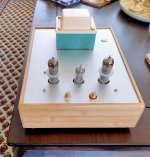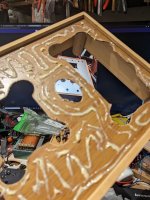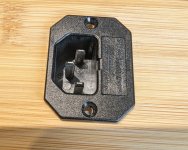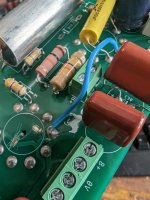Looks great! I have built a half dozen SE84CS clones over the years. A couple were built with new parts, but most using parts from old stereo console and radio amps. I think the "secret sauce" of the Zen amp comes down to a higher than normal primary impedance on the output transformers, a hot operating point for the power tubes, and the use of the excellent 6P15P-EV and 6N1P-EV in the circuit. I especially like the 6P15P-EV triode strapped. I like Dave's suggestion of building the power supply with film caps, and have built the "premium" versions of the amp with them. If you have high sensitivity speakers, such as my La Scalas, there might be a slight hum at the speaker unless you add more capacitance or a choke to the power supply. Steve Deckert has said that the circuit sounds better without an additional choke and as designed. If your speakers are below 100 DB/W/M, you should be okay with the amp as is
Hi Tizman. Thanks! My speakers are quite efficient. Said to be 100 dB. But I've built a little SE before without choke. No issues. I'm definitely going with the all film path. Might drop the choke as well. Might as well because it is a "clone". 😉
I wonder though how much the remark by Steve that it sounds better without choke is just marketing.
I've already desoldered the 10uF lytic of the board. Just waiting for my polyprops to arrive today.Dave's suggestion of building the power supply with film caps
I'm using my RH-84 boards that were designed by a fellow member. And shown here is the hazen mod in place. Shown also are the coupling caps. Jantzen superior Z cap without plastic around it. When cleaning my pcb with alcohol it rubbed off some of the colour...did not look right so I just removed the whole plastic cover.

Also you can see I did not use the LM317 current source but used a resistor in lieu of that. (Did not use one resistor for both channels as in the ZEN)
Also you can see I did not use the LM317 current source but used a resistor in lieu of that. (Did not use one resistor for both channels as in the ZEN)
That may be the case. Maybe leave room to add one, and see if you need it. Less is more, so if you don't, all the better. The other odd thing about the circuit is that the power tubes share a common cathode resistor. This is not considered to be best practice. I haven't tried the amp with separate power tube cathode resistors though. Perhaps a lower parts count is its own reward?I wonder though how much the remark by Steve that it sounds better without choke is just marketing.
Last edited:
I suppose it might have its advantages. But I'll keep it as is re the cathode resistors. Seen here is the cathode resistor on top for better heat performance (I hope) ..ps should have had the plate resistor for the 6n1p on top as well...but o well...good enough. Also shown is the wire for pin 9 of the 6n1p to ground. (I obviously also had to hack the heater supply on this board because it is was designed for the 12AT7

Also shown is the triode wiring of the sv83 because that is also not on the RH-84. Big open soldering pads near the EL84 text is where the zener diode usually goes for the RH-84. Another detail is the Russian mil-spec sockets. I can't bear to use the Chinese stuff.
Also shown is the triode wiring of the sv83 because that is also not on the RH-84. Big open soldering pads near the EL84 text is where the zener diode usually goes for the RH-84. Another detail is the Russian mil-spec sockets. I can't bear to use the Chinese stuff.
Last edited:
I really like the idea of an all-film cap power supply using Vishay or Wima DC-link caps. Maybe when I eventually do a nice SE amp I'll try it out. Something like this build is a good place to go for it.
Nothing obvious.Were you able to discern a difference with or without?
a nice SE amp
At least the last cap in the supply since it is in the signal path.
dave
- Home
- Amplifiers
- Tubes / Valves
- My Decware Zen "Clone"



